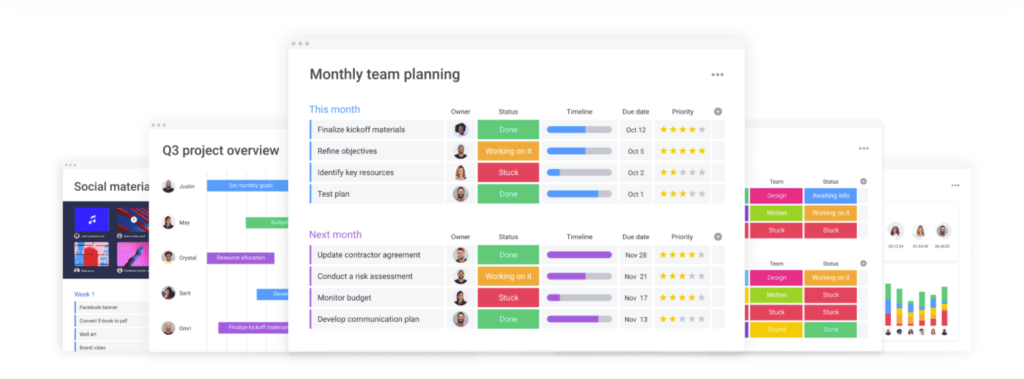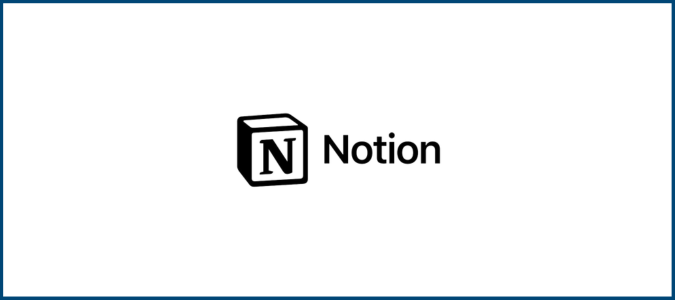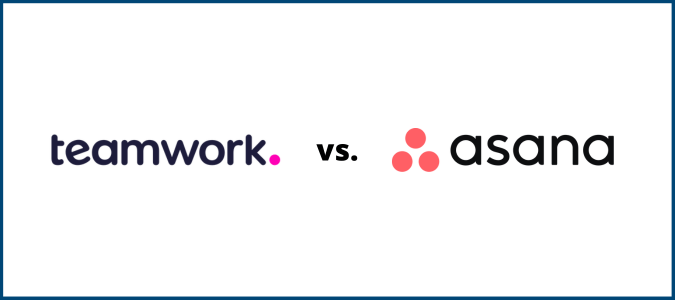So many project managers don’t know where to start. They’re left wondering what their goals are, and it makes the job a lot harder than it should be.
And causes ineffective results and unclear ideas about the project.
This guide will crystalize the steps in project management (PM) making sure best practices are clear.
This easy stroll through the project lifecycle will give you unwavering confidence while you go through your project from start to finish.
Why Project Management Is So Important
Project management is the art constructing plan to eliminate a problem, create a unique product or service, or deliver a specified outcome.
You get the best results by breaking down a project into its main components in the most efficient and affordable way. This is primarily important for project managers because it provides clear paths to successful outcomes early.
Other benefits—like a clear understanding of project roles across the whole team, identifying specified resources available to the team, and faster detection of inefficiencies— will guide team members down a clear path of knowing what needs to be done. And, solid project management eases stakeholders minds, knowing they can see a clear plan.
This becomes more important the bigger the project:
Take, for example, the 2012 London Olympic stadium project. This was a huge endeavor that needed to be organized and built within a four-year period between 2007 and 2011 with a total budget 496 million (over $690 million).
Do you think this project to build a world-class, multi-sport venue could have been created without project management tools, resources, methodologies and frameworks?
Of course not.
For example:
The scope of the project needed to be tailored to meet clear goals, objectives, and deliverables throughout every phase of the project lifecycle, from architectural design to clearing the land, setting the foundation, and much more.
Let’s break down the five major parts a beginner should know when starting a project.
How to Improve Project Management Process Today
A project manager is a person ultimately responsible for overseeing and executing the project. They manage the operations, planning, and strategy required to steer the job to its intended outcome.
Easy enough, right?
Now, most of you won’t be building Olympic stadiums or anything remotely close to that caliber of project. But the idea here is that sound PM processes map to any scale project. So, the same format to coordinate an Olympic stadium can also be applied to your simple project rollout.
You’re going to need software to help you execute and streamline your PM processes. To help you there, we have the perfect article that gives you our top choices for project management software.
Monday.com is our top overall pick for most teams. It will turn any nervous beginner into a confident project manager by offering the best array of features for success.
For example, the software’s comprehensive calendar and timeline take the daily confusion that plagues many PMs and replaces it with crystal clear steps to coordinate and deliver exactly what your stakeholders are looking for.

Monday.com will also improve and encourage regular communication with your team, eliminating the risk of your project failing because of overlooked details about budget, tasks, or missing resources.
Sometimes, it’s all about the visual data. Monday.com includes various in-depth project views, task progression, and workload visualization. In the blink of an eye you can see the progress of the project as a whole and how each member is doing individually.

If you want to turbocharge your project management skills overnight, using Monday.com’s seamless app integration is the way to go.
The project management platform allows you to link other applications you’re using within your daily workflow, like Zoom for video calls, Excel for custom reporting, and Dropbox for document and file sharing.
Now that you know what software will get you moving smoothly through your projects, let’s break down the core elements and best practices beginners need to know for project management.
#1 – Define Your Project
In this first phase of project management, you will describe the overview of your project.
This begins with defining the “why” behind the project. Project management terminology calls this a business case. Some organizations will call it a project charter or project initiation document.
Map out your project approach and what methodologies and frameworks you might use (including your choice of project management software).
Here is how to make a business case for your project:
- Define the scope of your Project
- List who will be working on the project
- Define the value proposition for actually doing the work
- List key stakeholders
- Identify high-level risks
- Define how you will execute the main benefits in the project
- Scope your overall budget
- Recognize your constraints as a project manager
You also want to have documentation of this business case that team members can refer to at the project start and through its lifecycle.
Monday.com integrates with the most-used communication and file-sharing software to make this easier.
Integrating your PM software with Slack, for example, will decrease confusion when communicating the goals of the project, while integration with Dropbox or Atlassian easily enhances file sharing and keeps resources and procedural documents just a mouse click away from team members and stakeholders.
#2 – Planning
The next core element of project management is the planning process.
In this phase you should set all necessary goals and define the scope of the project.
It’s also a great idea to have a work breakdown schedule. What you want to do here is list out all your work and separate it into a schedule that is easy to digest for your team and stakeholders to see what is coming next.
Plus, you should set up a roadmap for milestones, because projects are never just done by a specific time and date.
Great PMs always involve milestones and checkpoint goals. This helps because your team will understand how close they are to the deliverable of project. It also moves the project along smoothly with no surprise delays at the end because all your checkpoints are clearly defined.
Proficient PMs also incorporate risk management plans with clear communication.
For example, creating a Slack channel to discuss risk management gives team members a platform to identify new risks that might occur that can stop your project in its tracks, especially ones that were not addressed in the original brainstorming session.
Here is how you create a simple plan:
- Project plan – this encompasses sub-plans (the other plans listed below) that make up the entire project plan. This will include every task and objective necessary to deliver your project to completion.
- Communication plan – You create a plan on how to communicate with clients and people within your company involved with the project. List all stakeholders and their role, create templates for communicating, and identify weekly and monthly update and review events.
- Resource plan – Agree on what resources are needed for which tasks. Beginners can get tripped up on this. Setting guidelines on standard operations for the project, assigning a liaison to ask questions when confusion arises on next steps, and determining the direct costs associated with each resource are useful actions here. Include materials you may need and how each resource can keep things running smoothly.
- Financial planning – One of the biggest problems project managers face is coming in under budget. List out specific expenses and create an expense schedule, then set a process for controlling and monitoring expenses throughout your project. You want a strong financial plan for tracking your project budget and to reassure stakeholders.
- Risk management plan – Every project will have some sort of risk for which you need to plan. It’s up to you to figure out the most likely potential pitfalls and manage against it. That can start with you listing any potential risks your projects might have,then prioritizing the risks based on the likelihood they will arise. Last, you want to estimate how impactful each risk can be on the success of the project.
Planning is extremely important because it keeps you on track and helps you not add any unnecessary bloat to your project.
This means that at any point in the project, a step that is not properly defined—and, thus, introduces uncontrollable changes and additional steps—will be destructive and affect a project’s ultimate success.
This is known as scope creep, and is extremely harmful to any project and should be avoided.
#3 – Executing Your Plan
This is the bulk of your project right here.
The first thing is to focus on managing resources, specifically how to manage your team. Sure, non-human resources are on this list; but let’s be honest, you have full control over how you use them.
This phase is all about actually shepherding your team while doing the work. You will hold meetings and actually begin to see who fits best for each task, then assign members to specific areas of the project.
If you have members on the team that gravitate towards specific tasks for your project, utilize them in that way.
For example, do you have a person great at interpersonal communication? Great, make them your liaison for quick questions and client or stakeholder updates.
Playing to the strengths of your team members is a great way to optimize specific task management.
Here are a few ways to manage resources to effectively execute your plan:
- Select a project lead based on previous success and project requirements
- Establish a project team based on the primary objectives of the project plan and project lead
- Set up systems to track the team activity and focused results
- Use time and task management to log and assess the time taken to complete each task. This is easily done with timesheet and time management logs that record this data.
Each of these areas of project management are crucial to execution and successful delivery of a project.
It’s also important to remember that nothing is static when executing your plan. As a project manager, you set up the game plan and make adjustments along the way as new situations arise, making you both coach and player in your project management process.
#4 – Monitoring The Team
This phase is coupled with executing your plan. As you navigate the twists and turns of your project, you will need to monitor your team’s daily progress and the quality of work.
This also gives you the time to track final deliverables while getting a comprehensive view of the entire project—including budget—and individual team members.
Some common ways to get started monitoring your team and tracking progress:
- KPIs are a way to track your metrics to ensure things are happening as they should. They consist of your highest valued performance goals. For example, on-time completion is a way to track how many tasks are completed according to schedule. Other common metrics are financial indicators, which measure results on economic stability. Measuring net profit and gross profit margin will provide streamlined details on financial health and improve budget management.
- Missed milestones is another metric you can focus on. It will let you know if there is a delay somewhere and you need to find out where. Delays are the death of a project so keep this metric a top priority.
- Actual hours worked vs planned gives you detailed insight on hours scheduled for a task and if your calculations are accurate with the team members involved. If things are not adding up, you can make adjustments, helping you stay on track.
This is important because it keeps everyone accountable and you can easily adjust goals if deadlines are not being met. If confusion seems to be affecting performance, jump on a quick call to talk about the dynamics of task expectations.
Monitoring your team gives you instantly usable feedback that can help you recognize a bottleneck in the process. Or, this can uncover something in the project that will increase productivity that would not be otherwise noticed if not for you monitoring so aggressively.
#5 – Close Out
This is the promised land, the result you and your team set out to achieve from the start.
Here, you will give the deliverables of the project to the stakeholders. You want a structured method to wrap your project up to make sure nothing is forgotten. This can always be improved by keeping a clear view on what the end result is throughout the project so the closeout always goes smoothly.
Here are a few steps you can take to learn from your project and tie off loose ends:
- Review the project for anything that you might have liked to see done better
- Make a list of things you learned personally that you may not have known previously
- Close out contractor or freelancer accounts
- Put together a little work event to congratulate team members for their sacrifice and efforts during the project (this goes a long way)
- Conduct a meeting to go over what was done well and what could be improved for the next time if you work with similar people on projects.
- Create a report that goes over the final project. Make one for yourself and one for your company.
This is how you complete a closeout as a novice project manager. Your company may handle things a bit different as far as making sure everything has been completed.
If you can incorporate all or at least a few of the above steps, you will quickly be known as a very thorough and trustworthy PM in no time.
5 Best Practices for Project Management Every Beginner Needs to Know
As a beginner, you’re probably looking for some ways to address the biggest struggles all PMs face. We’ve laid out below the top things you need to know.
Best Practice #1 – Selecting the Best PM Software
Honestly it all starts with reading as much as you can about project management software. The best place to start is here.
It’s very important to realize this now—you will only be as good as your PM software lets you be.
Some software is made for specific industries, some give you more options for integration and make communication a breeze, while some others are heavy on reporting features.
Familiarize yourself with how they work and find one that fits your recurring PM needs. This will give you confidence moving into the next phase of project management.
Best Practice #2 – Communicate Effectively
Effective communication is a must throughout the entire lifecycle of your project.
This is true whether you are holding a kickoff meeting to make sure all of the stakeholders and team members are on the same page before the project begins or you are discussing first steps and outcome goals with your team.
As a PM, new or seasoned, talking about expectations for each role and then answering questions is a very effective way to communicate what things need to be done for a project.
Also, having team members fill out questionnaires about what they think the end result of a project should look like will give you a better outlook on who really understands the big picture and who doesn’t.
Set up a plan to meet consistently so communication flows well and captures the essence of what you are trying to achieve.
Best practice #3 – Realize Mistakes Are Part of the Process
Oftentimes, beginners are so tied up in the technology, the tools, and the templates that they feel mistakes are not supposed to happen.
Several accounts from experienced and successful PMs show they had to relax and know everything won’t happen overnight. It took time to hone their skills and find their flow and confidence level.
The same goes for you. All the tools and resources in the world don’t matter if you have stiff expectations of perfection and an unrealistic outlook.
That is why you have risk management strategies and you plan as much as you can. Things will go wrong, but how you are prepared for those things will give you the confidence you so desperately want on day one.
Best practice #4 – Learn How to Negotiate
As you spend more and more time around stakeholders and those vested in the outcome of your project, you will see they all have their own reasons and agendas for why they are involved with the project.
As if you don’t have enough on your plate, another of the many hats you wear as a PM is negotiating terms that are best for all parties involved. This requires you learn how to create a win-win situation for everyone. It also means you must learn when to compromise and when to push for what you think you need.
The job is full of situations where you must get what you want while convincing others they are getting something out of the deal that is just as valuable. This requires you to learn how to negotiate.
You don’t have to be a master, but the better you are able to work with management to get the resources you need or get the timeline you want for the final product, the easier your life will be.
Best practice #5 – Listen to Podcasts
You read this right, you don’t always need to learn things the conventional way with books, videos, and certification courses.
There are several podcasts on project management out there that are free, allowing you to learn from the experiences of other people who have made the mistakes you are trying to avoid like the plague.
And, yes, you still will make mistakes, but listening to the horror stories of those in your circle can be extremely entertaining and educational simultaneously.
We are not going to recommend any specific ones, but we can say there are plenty to choose from. To whet your appetite, here are some podcast episode titles that show what sort of topics get discussed:
- Project failure: When should you take the blame?
- Acing your project management job interview
- Leadership during times of disruption
Take your time and use your research skills to find the ones you like. As you do projects and listen to these podcasts, your beginner mentality will drift away, replaced by success stories and a team that loves working with you. Take advantage of the vast world of project management that’s at your fingertips.















